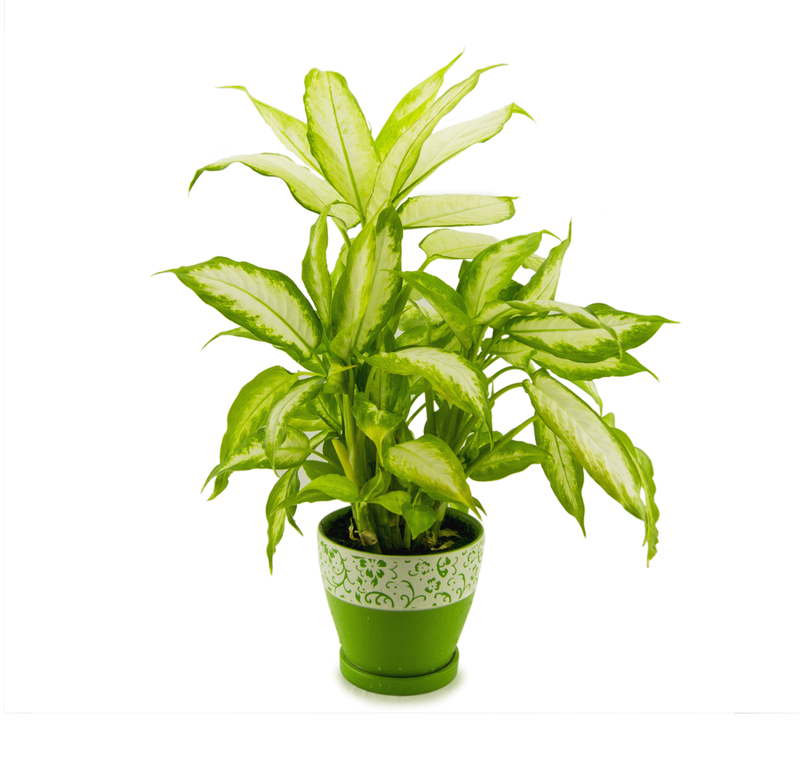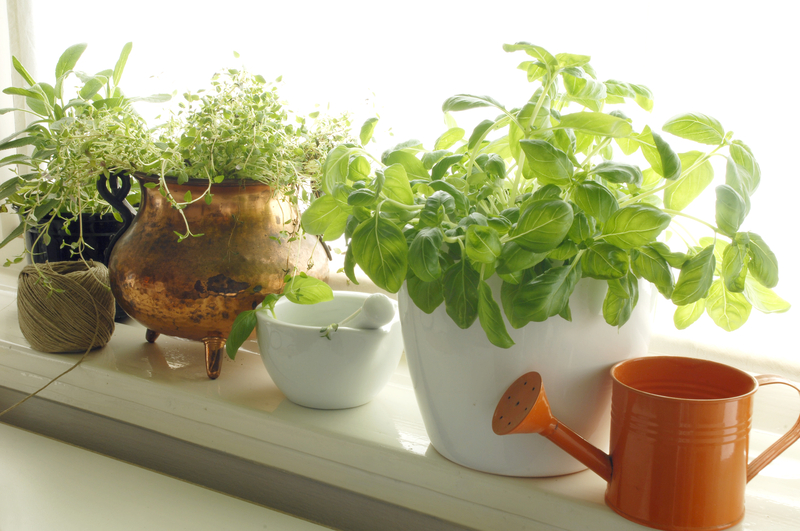A Dog-Safe Guide to Lush Gardening
Posted on 24/05/2025
A Dog-Safe Guide to Lush Gardening
Gardening brings joy, beauty, and life to your home, but when you share your outdoor space with a four-legged companion, maintaining a lush, dog-safe garden becomes both an art and a science. Ensuring that your garden is not just vibrant and bountiful but also safe for your beloved dog is essential for a harmonious and healthy home environment.
Why Choose Dog-Safe Gardening?
Dogs are curious explorers, and their natural instincts to sniff, dig, and sometimes taste plants can put them at risk. Many common garden plants and chemicals are toxic to dogs, so cultivating a pet-friendly garden protects their health while offering them a stimulating outdoor haven.
- Protect your dog's health: Remove or avoid toxic plants and chemicals.
- Create a harmonious space: Dogs and gardens can coexist beautifully with thoughtful planning.
- Enhance your bond: Time spent gardening provides physical and mental enrichment for you and your pet.

Dog-Safe Garden Design Principles
Creating a dog-friendly garden doesn't mean sacrificing visual appeal or biodiversity. These handy design principles will ensure both your garden and your pet thrive:
- Plan with your dog's habits in mind: Watch where your dog likes to run, dig, or lounge, and design paths or designated zones accordingly.
- Choose pet-safe plants: Opt for non-toxic plants that won't harm curious chewers.
- Create boundaries: Use fencing, raised beds, or natural barriers to protect delicate plantings and keep your dog safe.
- Provide shade and shelter: Ensure your garden has shaded spots and accessible water for hot days.
- Secure hazardous areas: Compost bins, ponds, and sheds should be inaccessible to prevent accidents.
Essential Elements of a Dog-Safe Lush Garden
1. Safe and Soothing Landscaping Materials
- Paths: Use smooth pebbles, flagstones, or untreated wood chips--not cocoa mulch, which is toxic to dogs.
- Fencing: Ensure fences are tall enough to prevent escapes, and check regularly for gaps or sharp edges.
- Non-slip surfaces: Dogs love to bolt and play outdoors. Non-slip materials prevent injury during their most energetic zoomies.
2. Dog-Proofing Outdoor Features
- Ponds: Fenced or covered ponds prevent accidental falls while keeping your dog away from stagnant water.
- Raised Beds: Elevate delicate or edible plants out of your dog's reach, using sturdy materials that withstand digging.
- Compost bins and sheds: Store garden chemicals, fertilizers, and compost securely to avoid accidental ingestion.
3. Designated Play and Dig Areas
Channel your dog's natural digging and playing instincts by offering a sand or soil pit where they can dig freely, saving your flower beds from enthusiastic paws. Assigning a dedicated zone for toys, play, and relaxation will help your pet learn boundaries within the garden.
Choosing Dog-Safe Plants for a Lush Garden
The core of a pet-friendly garden lies in choosing dog-safe plants. Many familiar ornamental and edible plants can pose dangers if ingested. Start your lush landscaping with these safe options and learn which to avoid:
Dog-Friendly Plant Choices
- Herbs: Rosemary, basil, thyme, sage, and parsley (in moderation) are dog-safe and culinary delights.
- Flowers: Sunflowers, marigolds, snapdragons, zinnias, and orchids (but always verify species).
- Grasses: Fountain grass, oat grass, and rye are non-toxic and add lovely texture to your landscape.
- Fruits & Vegetables: Blueberries, carrots, peas, apples (without seeds), and cucumbers make tasty, safe snacks.
- Tough ground covers: Elfin thyme, Irish moss, and clover are resilient to paw traffic and gentle on feet.
Note: Even with non-toxic plants, excessive grazing can cause digestive upset. Monitor your dog's behavior, especially with new plantings.
Plants to Avoid in a Dog-Safe Garden
Many seemingly innocuous plants can harm dogs if ingested--even in small amounts. Here are common toxics to exclude:
- Lilies: All varieties are toxic
- Aloe Vera: Can cause vomiting and lethargy
- Oleander: Highly poisonous if chewed
- Foxglove: Toxic to the heart
- Azaleas & Rhododendrons: Can induce vomiting, diarrhea, and weakness
- Daffodils, tulips, hyacinths: Bulbs are particularly dangerous
- Sago palm: Causes severe liver damage
- Yew: Fatal if ingested
For a comprehensive list of pet-toxic and safe garden plants, visit the ASPCA's official website or consult your veterinarian for local recommendations.
Dog-Safe Garden Care: Soil, Mulch, and Fertilizer Tips
The right garden care products and soil amendments are just as important as plant choice. Many fertilizers, pesticides, and mulches can harm dogs through ingestion or skin contact. Here's how to keep your dog-friendly garden lush and healthy:
Best Mulch Options for Dogs
- Cedar and pine bark: Generally considered safe and help deter pests naturally.
- Straw or untreated wood chips: Good for vegetable beds and play areas.
- Avoid cocoa mulch: Highly toxic to dogs! Contains theobromine, the same compound found in chocolate.
Dog-Friendly Fertilizer and Pest Control
- Composted manure and seaweed: Offer natural nutrients without chemical risk.
- Bone meal and blood meal: Can attract pets and may cause upset stomach--use with caution and bury deeply.
- Avoid chemical pesticides: Choose neem oil, diatomaceous earth, or insecticidal soaps; always keep pets away until products dry completely.
Garden Maintenance in a Dog-Safe Yard
Tips for Safe and Lush Yard Upkeep
- Supervise new plantings: Curious dogs may dig up or chew new installations. Use temporary fencing until roots are established.
- Regularly check for new hazards: Windblown seeds, mushrooms, and dropped branches could pose risks.
- Clean up fallen fruit: Overripe or fermenting fruits can cause stomach issues or intoxication.
Pro Tip: Keep a pet first-aid kit and emergency vet contacts handy in case of accidental ingestion or injury.
Training Your Dog for Garden Success
- Reinforce boundaries: Use positive reinforcement to teach your dog which areas are off-limits.
- Redirect negative behavior: If your dog starts digging up flower beds, guide them to their designated area instead.
- Provide enrichment: Puzzle toys, scent trails, and regular walks reduce destructive boredom behaviors.
Irrigation and Water Safety for Dogs
A luscious garden demands consistent watering--but dog safety is key. Avoid standing water in saucers, buckets, or birdbaths, as they can harbor bacteria, algae, or pose drowning risks. Always use clean, fresh water in dog water bowls and incorporate automatic watering systems that minimize puddles and wet, muddy paw prints.
Lawn Care & Grass Varieties for Dogs
Choosing the Best Dog-Resistant Lawns
- Bermuda grass: Tolerates wear, tear, and frequent foot traffic
- Fescue blends: Stays green and recovers from rough play
- Buffalo grass: Great for low-maintenance, drought-tolerant lawns
Avoid fertilizers or weed killers with 2,4-D, glyphosate, or paraquat, as these chemicals can be toxic to pets--especially after recent treatment.
Dog-Safe Edibles and Treats from Your Garden
Growing edible plants for both your family and your dog is a rewarding way to enjoy your space. Always wash homegrown produce before sharing with your pup, and check each veggie or fruit for pet compatibility.
- Dog-safe vegetables: Green beans, carrots, peas, zucchini, pumpkin, and sweet potatoes (cooked and plain).
- Safe fruits: Blueberries, watermelon (seedless), apples (no seeds), bananas, and strawberries--in moderation!
- Avoid: Grapes, raisins, onions, garlic, avocado, tomato leaves, cherries, and unripe or green potatoes.
Introduce any new foods gradually and observe for allergies or sensitivity.
Year-Round Tips for a Dog-Safe Lush Garden
- Spring/Summer: Watch for heat stress--offer shade, fresh water, and check paws for hot surfaces.
- Autumn: Rake up fallen leaves and fruit; some decaying foliage can be hazardous.
- Winter: Prevent ice-melt chemicals and antifreeze from contaminating garden areas.

Frequently Asked Questions in Dog-Safe Gardening
- Q: Can dogs eat grass?
- A: Occasionally chewing on grass is normal, but excessive grazing can indicate dietary deficiencies or digestive upset.
- Q: How do I stop my dog from digging up my garden?
- A: Provide a dedicated digging area, use deterrent scents (like vinegar or citrus peels), and positively reinforce appropriate behaviors.
- Q: Are all organic fertilizers safe for dogs?
- A: No--some (like blood or bone meal) are attractive but can cause stomach upset. Always choose products labeled as pet-safe.
Conclusion: Cultivating a Vibrant Dog-Safe Garden
Your lush, dog-safe garden can be a vibrant retreat for every member of your household--including the four-legged ones. By selecting pet-friendly landscaping, using dog-safe plants and care practices, and providing proper boundaries and enrichment, you can nurture a garden that is beautiful, resilient, and safe.
Remember, regular supervision and training are the ultimate keys to ensuring your garden is both lush and dog-friendly. With these comprehensive tips, get ready to enjoy a blooming, wagging, and wildly wonderful outdoor space all season long!
For more pet-friendly gardening advice and expert tips, bookmark this page and share your own success stories below!

